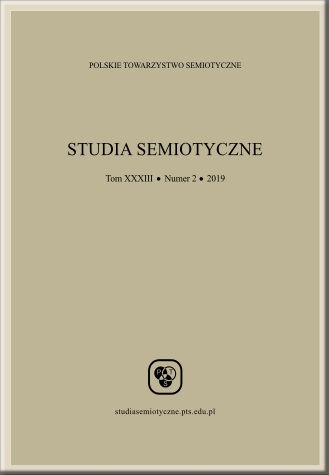Abstract
DOI: http://doi.org/10.26333/sts.xxxiii2.06
According to the received view formal semantics applies to natural (ordinary) language to some extent only. It is so because natural language is inherently indefinite, in particular, its expressions are ambiguous, vague and admits departures from syntactic rule. Moreover, intensional contexts occur in ordinary language – it results in limitations of the principle of compositionality. The ordinary conversation appeals to various principles, for instance, Grice’s maxims which exceed logical formalism. Thus, ordinary language cannot be fully formalized. On the other hand, if L is a formal language, its metalanguage ML, must be partially informal – for instance, it contains, terms of ordinary mathematics, especially set theory. Even, if, for instance, due to the technique of aritmetization, ML can be represented in ML, such a representation is only local. In fact, this view can be derived from some Tarski’s remarks on the role played by natural language. It is usually assumed that the universality of natural language, is the source of troubles associated with antinomies. It is so and this circumstance requires a solution, for example by distinguishing levels of language. However, even, if antinomies are excluded, what is informal is prior with respect to what is formal. It shows that formal semantics has limitations even with respect to formalized languages.
References
Cann, R. (1993). Formal Semantics. An Introduction. Cambridge: Cambridge University Press.
Carnap, R. (1939). Foundations of Logic and Mathematics. Chicago: University of Chicago Press.
Carnap, R. (1947). Meaning and Necessity. A Study of Semantics and Modal Logic. Chicago: University of Chicago Press.
Davidson, D. (1967). Truth and Meaning. Synthese 17, 304–323.
Grice, P. D. (1975). Logic and Conversation. W: P. Cole, J. Morgan (red.), Syntax and Semantics (t. 3, s. 41–58). Nowy Jork: Academic Press.
Kisielewicz, A. (2017). Logika i argumentacja. Praktyczny kurs krytycznego myślenia. Warszawa: Wydawnictwo Naukowe PWN.
Kokoszyńska, M. (1936). W sprawie względności i bezwzględności prawdy. Przegląd Filozoficzny, 39, 424–425.
Martin, R. M. (1959). Toward a Systematic Pragmatics. Amsterdam: North-Holland Publishing Company.
Montague, R. (1970). Universal Grammar. Theoria, 36, 373–398.
Morris, C. (1938), Foundations of the Theory of Signs. Chicago: University of Chicago Press.
Murawski, R. (2000). Funkcje rekurencyjne i elementy metamatematyki. Problemy zupełności, rozstrzygalności, twierdzenia Gödla. Poznań: Wydawnictwo Naukowe PWN.
Parsons, D. (2016). Intensionality. A Critical Survey. Berlin: Springer.
Pelc, J. (1982). Wstęp do semiotyki. Warszawa: Wiedza Powszechna.
Quine W. V. O. (1953). Notes on the Theory of Reference. W: W. V. O. Quine, From a Logical Point of View (s. 130–138). Cambridge, Mass.: Harvard University Press.
Ryle, G. (1953). Ordinary Language. The Philosophical Review, XLII, 301–319.
Tarski, A. (1933). Pojęcie prawdy w językach nauk dedukcyjnych. Warszawa: Towarzystwo Naukowe Warszawskie.
Tarski, A. (1936). [Głos w dyskusji nad referatem M. Kokoszyńskiej]. Przegląd Filozoficzny, 30, 425.
Tarski, A. (1944). The Semantic Conception of Truth and the Foundations of Semantics. Philosophy and Phenomenological Research, 4, 341–375.
Tarski, A. (1995). Pisma logiczno-filozoficzne. T. 1: Prawda. Warszawa: Wydawnictwo Naukowe PWN.
Trzęsicki, K. (2016). Semiotyka i logika dla kognitywistów. Białystok: Wydawnictwo Uniwersytetu w Białymstoku.
Van Benthem, J. (2002). A Manual of Intensional Logic. Stanford: Center for the Study of Language and Information.
Woleński, J. (2007). Epistemologia. Poznanie, prawda, wiedza i realizm. Warszawa: Wydawnictwo Naukowe – PWN.


